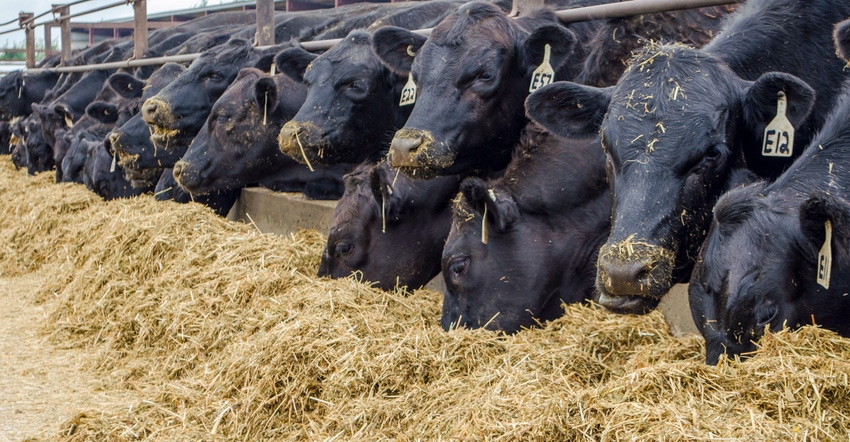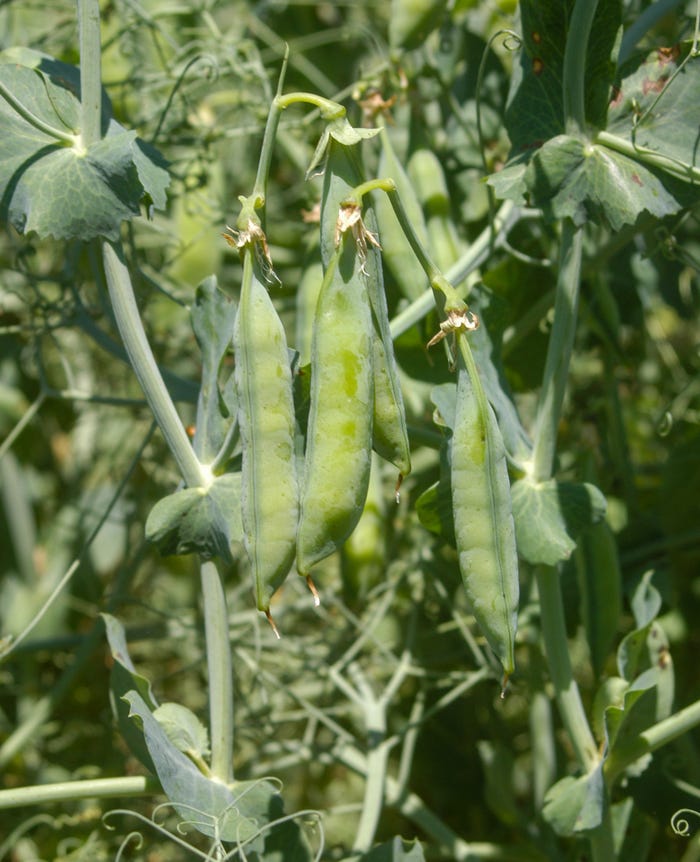Field peas contain about the same amount of crude protein as distillers grains.
May 14, 2020

Field peas can be used as a protein source instead of distillers grain in cattle rations, says Karl Hoppe, North Dakota State University Extension livestock systems specialist.
Distillers grains are 30% crude protein on a dry-matter basis. Field peas are 25% to 27% crude protein and contain a high amount of starch. The energy content of field peas is similar to corn grain.
Field peas are very palatable once cattle become accustomed to them, a process that can take about three days if they have not been fed them before. Field peas can be fed in amounts similar to corn, Hoppe says.
Price comparison
Typically, field peas are priced for the human food or pet food markets. These prices are considerably higher than feed grain prices. However, recently the demand in the pet food market has been reduced, and some field pea producers are looking for other markets.
If field pea prices are $5 per 60-pound bushel, that calculates to $167 per ton for a 25% to 27% (dry matter basis) crude protein feed.
“If dried distiller grains are $180 per ton for 30% [DM basis] crude protein, then field peas are a competitive protein source.” Hoppe says.
 PEA PROTEIN: Field peas fill out in a North Dakota field. While field peas contain a similar amount of crude protein, they are also high in starch and should not be a direct substitute for distillers grains. Including them in livestock diets at high rates may cause acidosis.
PEA PROTEIN: Field peas fill out in a North Dakota field. While field peas contain a similar amount of crude protein, they are also high in starch and should not be a direct substitute for distillers grains. Including them in livestock diets at high rates may cause acidosis.

If freight costs need to be added to distillers grains and field peas are already binned on the farm, then field peas are even more cost competitive.
Step up rations
Field peas cannot be directly substituted for distiller grains, though, Hoppe says.
Distillers grains go through a fermentation process to remove most of the starch and sugars. Field peas are high in starch. Including them in livestock diets at high rates may cause acidosis.
“As with all grains, using ‘step up’ rations, or slowly increasing the grain concentration into the ration, will reduce acidosis issues,” he says.
Also, there are yellow and green field pea varieties. Their protein contents may be slightly different. A feed analysis is needed to determine the crude protein concentration.
Source: NDSU, which is solely responsible for the information provided and is wholly owned by the source. Informa Business Media and all its subsidiaries are not responsible for any of the content contained in this information asset.
You May Also Like



